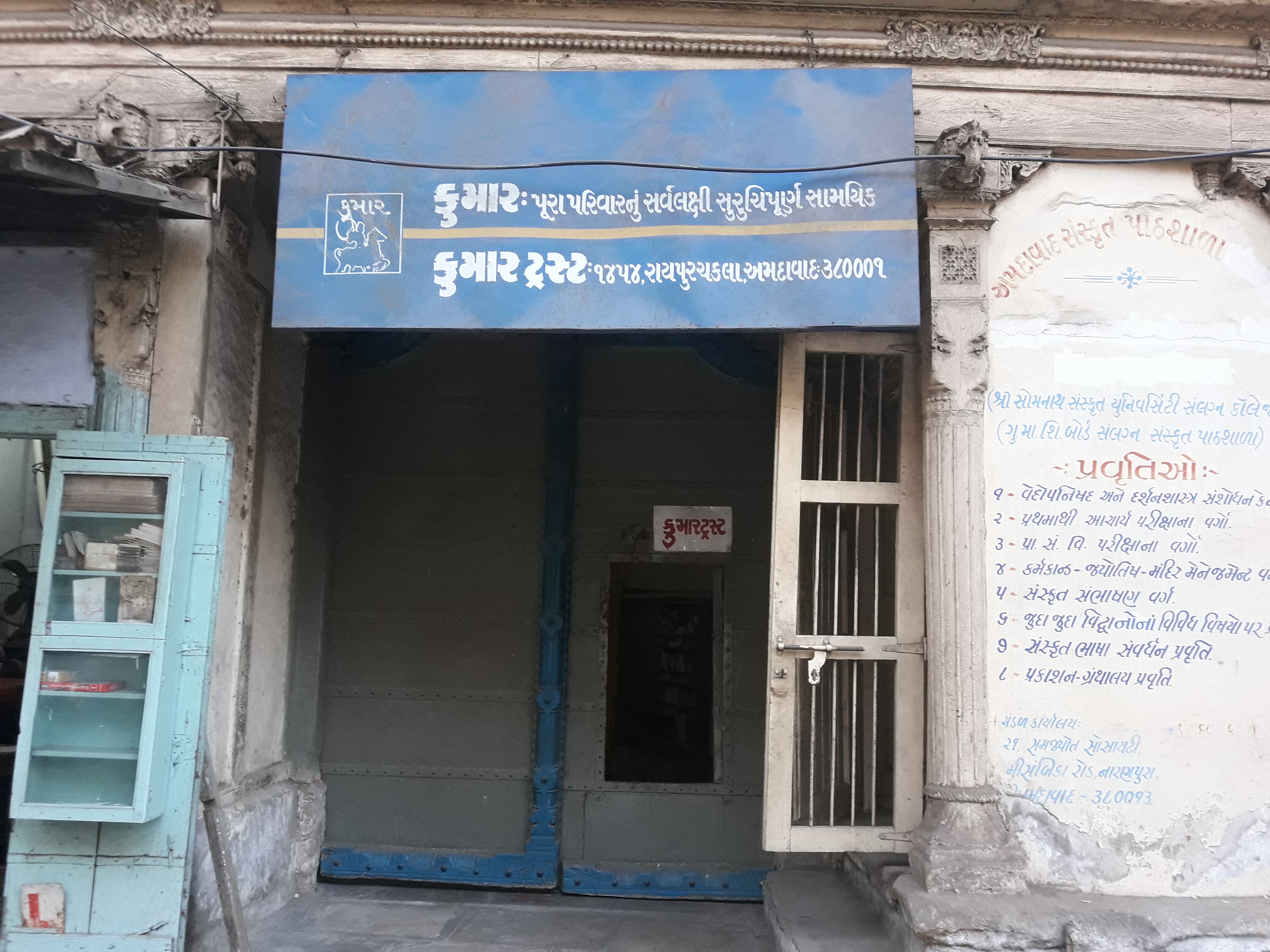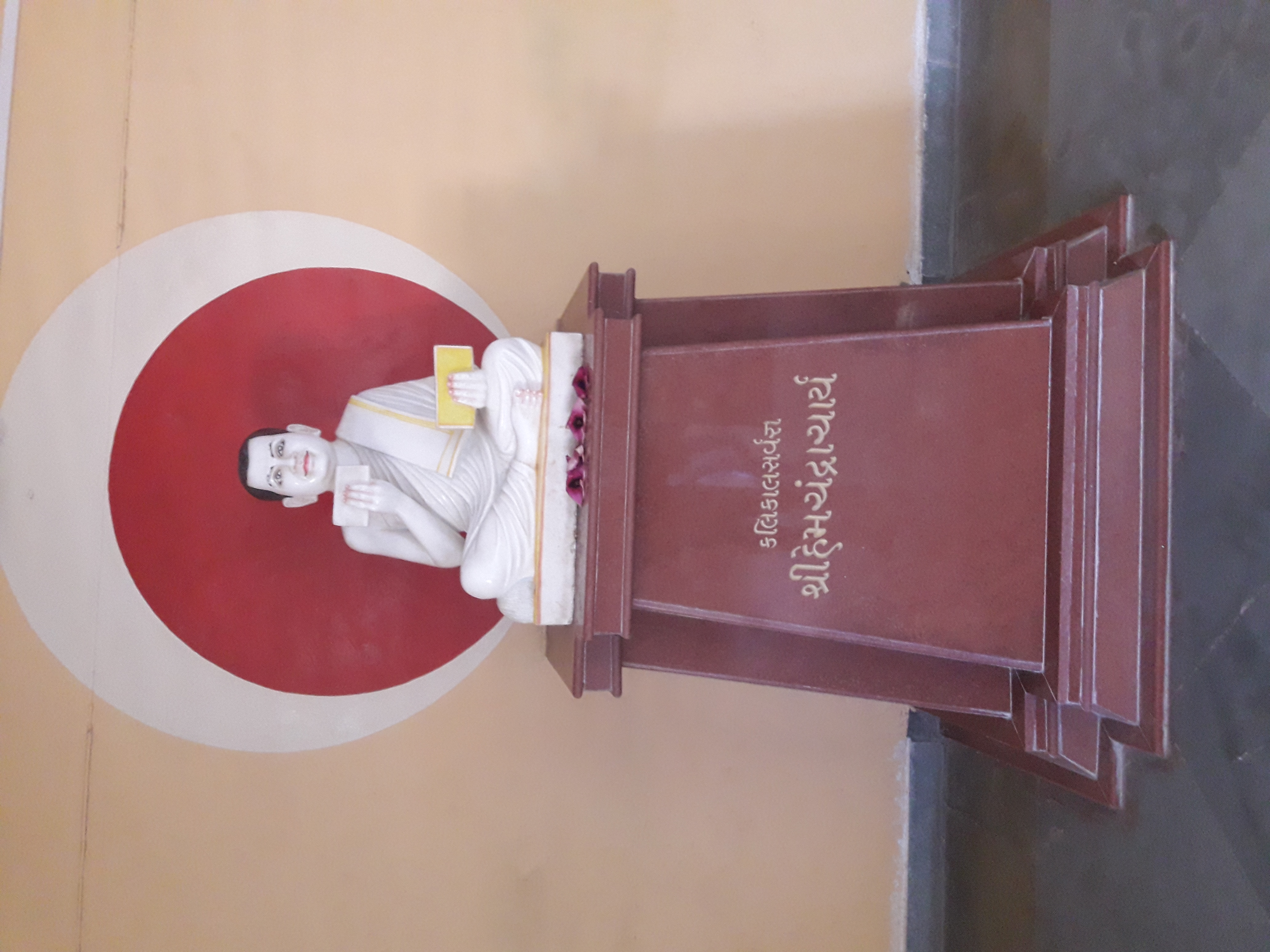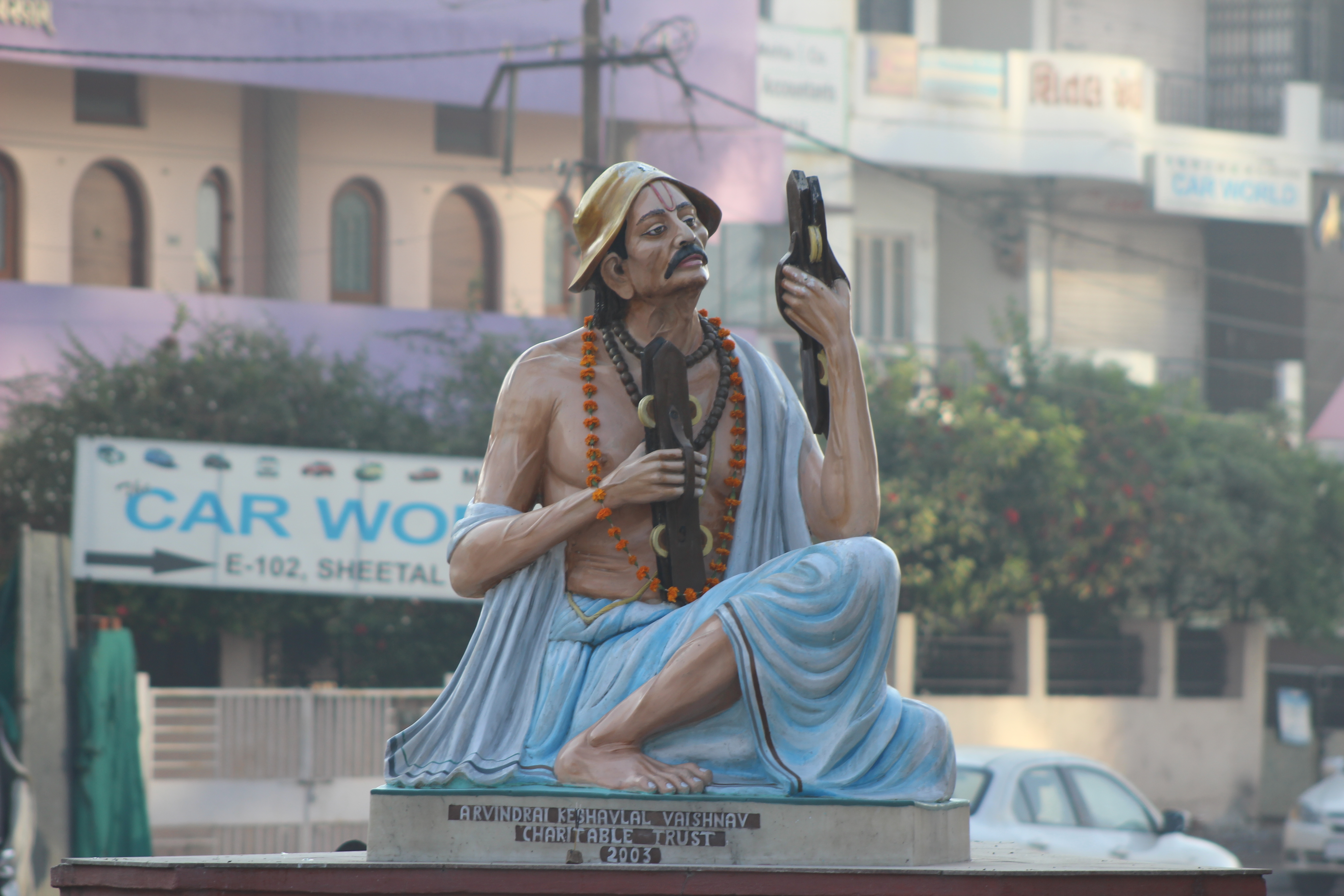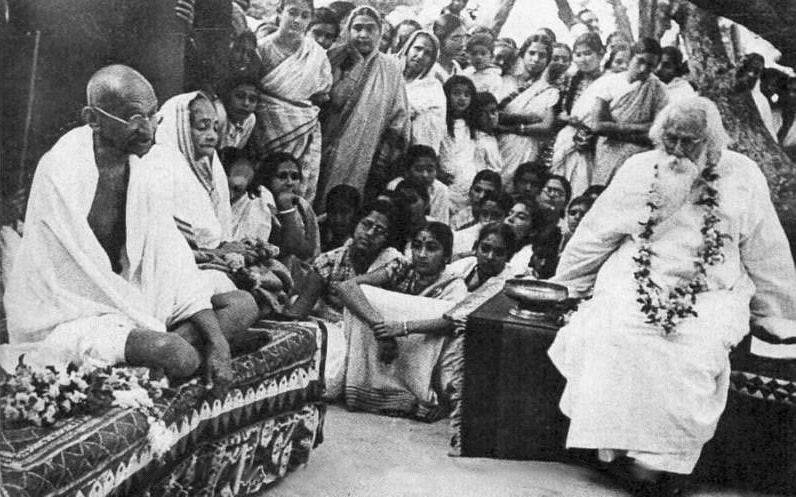|
Ravishankar Raval
Ravishankar Raval (1892–1977) was a painter, art teacher, art critic, journalist and essayist from Gujarat, India. He worked for the magazine ''Vismi Sadi'' until it closed in 1921, and then founded the cultural magazine ''Kumar''. Life Ravishankar Raval was born in a brahmin family on 1 August 1892 in Bhavnagar (now in Gujarat, India). His father Mahashanakar Raval was an officer in the British Communication Service. He spent his childhood in several towns as his father was transferred from one place to another. He wrote that he inherited his artistic instincts from his mother. He graduated from high school in 1909. During his first university year, at the local Arts College, his principal asked him to paint the stage sets for the college drama festival. He advised him to join arts by his Parsi professor Sanjana who was pleased with his artistic skills. Against his fathers non-approval, he joined Sir J. J. School of Art, Bombay. He was trained under Cecil Burns, the principal ... [...More Info...] [...Related Items...] OR: [Wikipedia] [Google] [Baidu] |
Bhavnagar
Bhavnagar is a city in the Bhavnagar district of the Saurashtra region of Gujarat, a States of India, state of India. It was founded in 1723 by Gohil Koli, Bhavsinhji Takhtasinhji Gohil (1703–1764). It was the capital of Bhavnagar State, which was a princely state before it was merged into the Dominion of India, Indian Union in 1948. It is now the administrative headquarters of the Bhavnagar district. Bhavnagar is situated 190 kilometres away from the state capital Gandhinagar and to the west of the Gulf of Khambhat. It has always been an important city for trade with many large and small scale industries along with the world's largest ship breaking yard, Alang which is located 50 kilometres away. Bhavnagar is also famous for its version of the popular Gujarati snack 'Ganthiya' and 'Jalebi'. History The Gahlot, Gohil Rajputs, Rajput of the Suryavansha, Suryavanshi clan faced severe competition in Marwar. Around 1260 AD, they moved down to the Gujarat's coastal area and es ... [...More Info...] [...Related Items...] OR: [Wikipedia] [Google] [Baidu] |
Kumar (magazine)
''Kumar'' ( gu, કુમાર) is a Gujarati literary magazine founded by Gujarati artist and author Ravishankar Raval in 1924. It is now edited by Dhiru Parikh. The headquarters is in Ahmedabad, Gujarat, India. History ''Kumar'' was founded by Ravishankar Raval in Ahmedabad in 1924. The magazine was started as an avant-garde cultural publication. Bachubhai Ravat served as editor-in-chief from 1924 to 1942 with him. After the death of Ravishankar Raval, Bachubhai served as editor until 1980. After the death of Bachubhai in 1980, Biharibhai Tank became the editor of magazine. In 1987, it was closed. After three years, in 1990, under the editorship of Dhiru Parikh, the publication resumed. Praful Raval serves as the co-editor of the magazine. In April 2011, the 1000th issue of magazine was released. See also * Kumar Gold Medal * List of Gujarati-language magazines This is a list of magazines published in the Gujarati language of India. List * ''Buddhiprakash'' * '' ... [...More Info...] [...Related Items...] OR: [Wikipedia] [Google] [Baidu] |
Akho
Akha Bhagat (commonly known as Akho; ) or Akha Rahiyadas Soni was a mediaeval Gujarati poet who wrote in the tradition of the Bhakti movement. He wrote his poems in a literary form called ''Chhappa'' (six stanza satirical poems). Life His exact dates are unknown, but according to scholars he lived from 1615 to 1674 or 1600 to 1655. A goldsmith by profession, he lived near Ahmedabad in Jetalpur, and later moved to Ahmedabad. His residence in Ahmedabad which is small room in Desaini Pol at Khadia is known as ''Akha no Ordo'' (literally "A room of Akha"). Akho was a goldsmith belonging to Hindu Soni caste and sub-caste Pasawala (Dhanpat). In Rajkot, Kothariya naka (one of the gate of fort) Chowk named after him Akha Bhagat Chowk. Soni Bazar Starts from here. He was a disciple of Saint Gokulnath, grandson of Vallabha Vallabhacharya Mahaprabhu (1479–1531 CE), also known as Vallabha, Mahaprabhuji and Vishnuswami, or Vallabha Acharya, is a Hindu Indian saint and philos ... [...More Info...] [...Related Items...] OR: [Wikipedia] [Google] [Baidu] |
Hemchandracharya
Hemachandra was a 12th century () Indian Jain saint, scholar, poet, mathematician, philosopher, yogi, grammarian, law theorist, historian, lexicographer, rhetorician, logician, and prosodist. Noted as a prodigy by his contemporaries, he gained the title ''kalikālasarvajña'', "the knower of all knowledge in his times" and ''father of Gujarati language''. Born as Changadeva, he was ordained in the Śvētāmbara school of Jainism in 1110 and took the name Somachandra. In 1125 he became an adviser to King Kumarapala and wrote ''Arhanniti'', a work on politics from a Jain perspective. He also produced ''Trishashti-shalaka-purusha-charita'' (“Deeds of the 63 Illustrious Men”), a Sanskrit epic poem on the history of important figures of Jainism. Later in his life, he changed his name to Hemachandra. Early life Hemachandra was born in Dhandhuka, in present-day Gujarat, on Kartika Sud Purnima (the full moon day of Kartika month). His date of birth differs according to sourc ... [...More Info...] [...Related Items...] OR: [Wikipedia] [Google] [Baidu] |
Mirabai
Meera, better known as Mirabai and venerated as Sant Meerabai, was a 16th-century Hindu mystic poet and devotee of Krishna. She is a celebrated Bhakti saint, particularly in the North Indian Hindu tradition. Mirabai was born into a Rathore Rajput royal family in Kudki (modern-day Pali district of Rajasthan) and spent her childhood in Merta. She is mentioned in ''Bhaktamal'', confirming that she was widely known and a cherished figure in the Bhakti movement culture by about 1600 CE.Catherine Asher and Cynthia Talbot (2006), India before Europe, Cambridge University Press, , page 109 Most legends about Mirabai mention her fearless disregard for social and family conventions, her devotion to Krishna, her treating Krishna as her husband and being persecuted by her in-laws for her religious devotion. She has been the subject of numerous folk tales and hagiographic legends, which are inconsistent or widely different in details.Nancy Martin-Kershaw (2014), Faces of the Feminine ... [...More Info...] [...Related Items...] OR: [Wikipedia] [Google] [Baidu] |
Narsinh Mehta
Narsinh Mehta, also known as Narsinh Bhagat, was a 15th-century poet-Saint#Hinduism, saint of Gujarat, India, honored as the first poet, or ''Adi Kavi,'' of the Gujarati language. Narsinh Mehta is member of Nagar Brahman community. Narsinh became a devotee of Krishna, and dedicated his life to composing poetic works described as ''bhakti,'' or devotion towards Krishna. His Bhajan, ''bhajans'' have remained popular in Gujarat and Rajasthan for over 5 centuries. Most notably, his composition ''Vaishnav Jan To'' was Mahatma Gandhi's favorite and became popular with freedom fighters across India. Biography Much of what is known about Narsinh Mehta is derived from his own compositions and poetic works, due to the lack of formal historical documentation during this period. Additional insights into Narsinh Mehta's biography are found in works from other poets of subsequent eras, as their poems describe in detail the personality of Narsinh Mehta and certain key events from his life. ... [...More Info...] [...Related Items...] OR: [Wikipedia] [Google] [Baidu] |
Hansa Jivraj Mehta
Hansa Jivraj Mehta (3 July 1897 – 4 April 1995) was a reformist, social activist, educator, independence activist, feminist and writer from India. Early life Hansa Mehta was born in a Nagar Brahmin family on 3 July 1897. She was a daughter of Manubhai Mehta, Dewan of Baroda State, and the granddaughter of Nandshankar Mehta, the author of the first Gujarati novel ''Karan Ghelo''. She graduated with Philosophy in 1918. She studied journalism and sociology in England. In 1918, she met Sarojini Naidu and later Mahatma Gandhi in 1922. She was married to Jivraj Narayan Mehta, an eminent physician and administrator who was the first Chief Minister of Gujarat. Career Politics, education and activism Hansa Mehta organized the picketing of shops selling foreign clothes and liquor, and participated in other freedom movement activities in line with the advice of Mahatma Gandhi. Later She established Desh Sevika Dal in 1930. She was even arrested and sent to jail by the British a ... [...More Info...] [...Related Items...] OR: [Wikipedia] [Google] [Baidu] |
Pinocchio
Pinocchio ( , ) is a fictional character and the protagonist of the children's novel ''The Adventures of Pinocchio'' (1883) by Italian writer Carlo Collodi of Florence, Tuscany. Pinocchio was carved by a woodcarver named Geppetto in a Tuscan village. He is created as a wooden puppet, but he dreams of becoming a real boy. He is known for his long nose, which grows when he lies. Pinocchio is a cultural icon and one of the most reimagined characters in children's literature. His story has been adapted into many other media, notably the 1940 Disney film ''Pinocchio''. Collodi often used the Italian Tuscan dialect in his book. The name ''Pinocchio'' is possibly derived from the rare Tuscan form ''pinocchio'' (“pine nut”) or constructed from ''pino'' (“pine tree, pine wood”) and occhio ("eye"). Fictional character description Pinocchio's characterization varies across interpretations, but several aspects are consistent across all adaptations: Pinocchio is an animated sent ... [...More Info...] [...Related Items...] OR: [Wikipedia] [Google] [Baidu] |
Calcutta
Kolkata (, or , ; also known as Calcutta , List of renamed places in India#West Bengal, the official name until 2001) is the Capital city, capital of the Indian States and union territories of India, state of West Bengal, on the eastern bank of the Hooghly River west of the border with Bangladesh. It is the primary business, commercial, and financial hub of East India, Eastern India and the main port of communication for North-East India. According to the 2011 Indian census, Kolkata is the List of cities in India by population, seventh-most populous city in India, with a population of 45 lakh (4.5 million) residents within the city limits, and a population of over 1.41 crore (14.1 million) residents in the Kolkata metropolitan area, Kolkata Metropolitan Area. It is the List of metropolitan areas in India, third-most populous metropolitan area in India. In 2021, the Kolkata metropolitan area crossed 1.5 crore (15 million) registered voters. The ... [...More Info...] [...Related Items...] OR: [Wikipedia] [Google] [Baidu] |
Nicholas Roerich
Nicholas Roerich (; October 9, 1874 – December 13, 1947), also known as Nikolai Konstantinovich Rerikh (russian: link=no, Никола́й Константи́нович Ре́рих), was a Russian painter, writer, archaeologist, theosophist, philosopher, and public figure. In his youth he was influenced by Russian Symbolism, a movement in Russian society centered on the spiritual. He was interested in hypnosis and other spiritual practices and his paintings are said to have hypnotic expression. Born in Saint Petersburg, to a well-to-do notary public Baltic German father and to a Russian mother, Roerich lived in various places in the world until his death in Naggar, Himachal Pradesh, India. Trained as an artist and a lawyer, his main interests were literature, philosophy, archaeology, and especially art. Roerich was a dedicated activist for the cause of preserving art and architecture during times of war. He was nominated several times to the longlist for the Nobel Peac ... [...More Info...] [...Related Items...] OR: [Wikipedia] [Google] [Baidu] |
Santiniketan
Santiniketan is a neighbourhood of Bolpur town in the Bolpur subdivision of Birbhum district in West Bengal, India, approximately 152 km north of Kolkata. It was established by Maharshi Devendranath Tagore, and later expanded by his son, Rabindranath Tagore whose vision became what is now a university town with the creation of Visva-Bharati.Pearson, WW.: ''Santiniketan Bolpur School of Rabindranath Tagore'', illustrations by Mukul Dey, The Macmillan Company, 1916 History In 1863, Debendranath Tagore took on permanent lease of land, with two ( Alstonia scholaris) trees, at an annual payment of Rs. 5, from Bhuban Mohan Sinha, the talukdar of Raipur, Birbhum. He built a guest house there and named it ''Shantiniketan'' (the abode of peace). Gradually, the whole area came to be known as Shantiniketan.Basak, Tapan Kumar, ''Rabindranath-Santiniketan-Sriniketan (An Introduction)'', p. 2, B.B.Publication Binoy Ghosh says that Bolpur was a small place in the middle of the 19th ... [...More Info...] [...Related Items...] OR: [Wikipedia] [Google] [Baidu] |
Rabindranath Tagore
Rabindranath Tagore (; bn, রবীন্দ্রনাথ ঠাকুর; 7 May 1861 – 7 August 1941) was a Bengali polymath who worked as a poet, writer, playwright, composer, philosopher, social reformer and painter. He reshaped Bengali literature and music as well as Indian art with Contextual Modernism in the late 19th and early 20th centuries. Author of the "profoundly sensitive, fresh and beautiful" poetry of ''Gitanjali'', he became in 1913 the first non-European and the first lyricist to win the Nobel Prize in Literature. Tagore's poetic songs were viewed as spiritual and mercurial; however, his "elegant prose and magical poetry" remain largely unknown outside Bengal. He was a fellow of the Royal Asiatic Society. Referred to as "the Bard of Bengal", Tagore was known by sobriquets: Gurudev, Kobiguru, Biswakobi. A Bengali Brahmin from Calcutta with ancestral gentry roots in Burdwan district* * * and Jessore, Tagore wrote poetry as an eight-yea ... [...More Info...] [...Related Items...] OR: [Wikipedia] [Google] [Baidu] |









.jpg)

